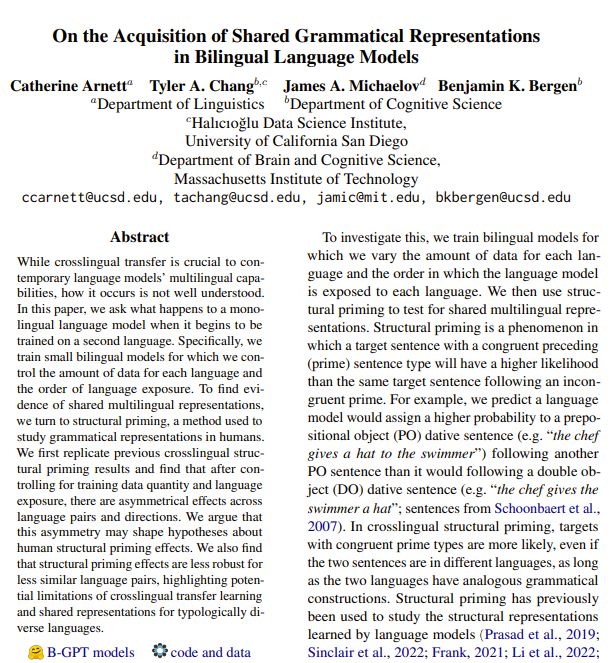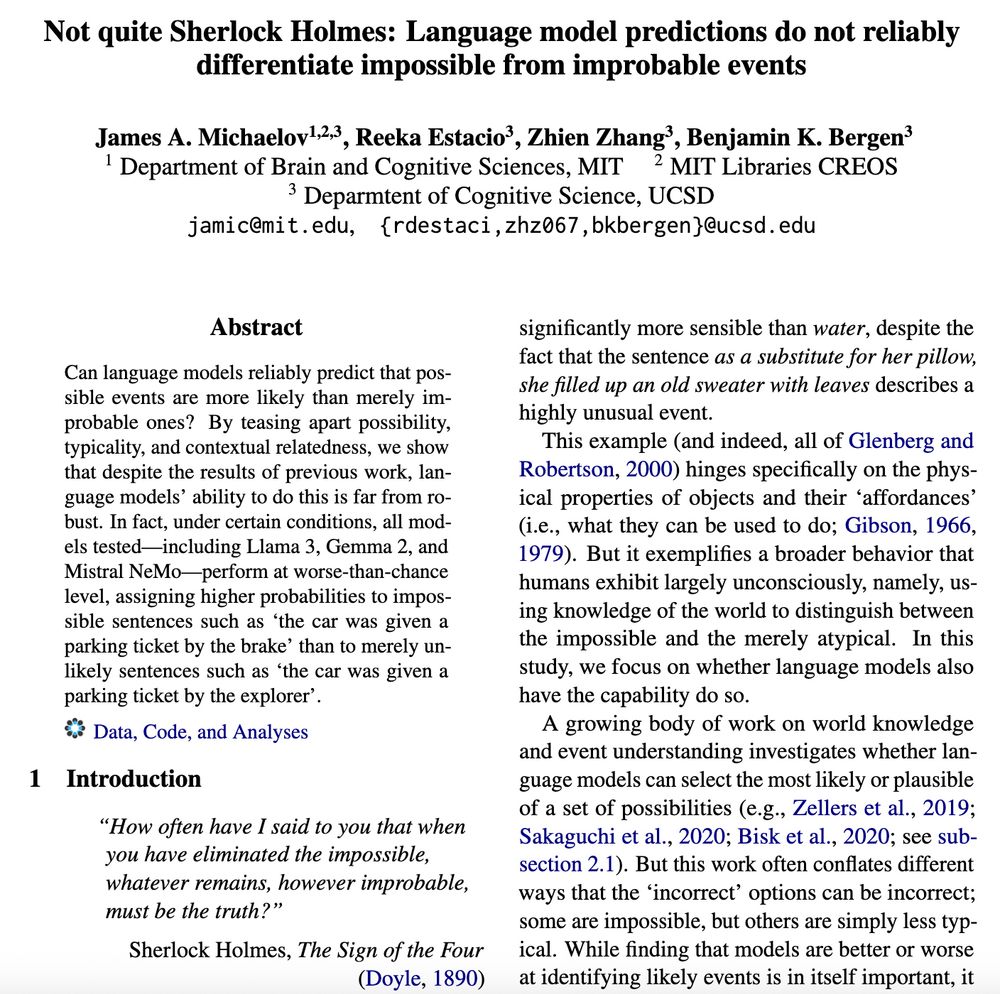James Michaelov
@jamichaelov.bsky.social
4.2K followers
520 following
35 posts
Postdoc at MIT. Research: language, the brain, NLP.
jmichaelov.com
Posts
Media
Videos
Starter Packs
Reposted by James Michaelov
James Michaelov
@jamichaelov.bsky.social
· Jun 12

Not quite Sherlock Holmes: Language model predictions do not reliably differentiate impossible from improbable events
Can language models reliably predict that possible events are more likely than merely improbable ones? By teasing apart possibility, typicality, and contextual relatedness, we show that despite the re...
arxiv.org
Reposted by James Michaelov
Reposted by James Michaelov
Reposted by James Michaelov
James Michaelov
@jamichaelov.bsky.social
· Nov 10
James Michaelov
@jamichaelov.bsky.social
· Nov 19
James Michaelov
@jamichaelov.bsky.social
· Nov 11
James Michaelov
@jamichaelov.bsky.social
· Nov 10
James Michaelov
@jamichaelov.bsky.social
· Nov 11
James Michaelov
@jamichaelov.bsky.social
· Nov 11
James Michaelov
@jamichaelov.bsky.social
· Nov 11
James Michaelov
@jamichaelov.bsky.social
· Nov 11
James Michaelov
@jamichaelov.bsky.social
· Nov 10
James Michaelov
@jamichaelov.bsky.social
· Nov 10
James Michaelov
@jamichaelov.bsky.social
· Nov 10
James Michaelov
@jamichaelov.bsky.social
· Nov 10

Revenge of the Fallen? Recurrent Models Match Transformers at...
Transformers have generally supplanted recurrent neural networks as the dominant architecture for both natural language processing tasks and for modelling the effect of predictability on online...
openreview.net
James Michaelov
@jamichaelov.bsky.social
· Nov 10

Ignoring the alternatives: The N400 is sensitive to stimulus preactivation alone
The N400 component of the event-related brain potential is a neural signal of processing difficulty. In the language domain, it is widely believed to …
www.sciencedirect.com
James Michaelov
@jamichaelov.bsky.social
· Nov 10

Strong Prediction: Language Model Surprisal Explains Multiple N400 Effects
Abstract. Theoretical accounts of the N400 are divided as to whether the amplitude of the N400 response to a stimulus reflects the extent to which the stimulus was predicted, the extent to which the s...
doi.org
James Michaelov
@jamichaelov.bsky.social
· Nov 10

Structural Priming Demonstrates Abstract Grammatical Representations in Multilingual Language Models
James Michaelov, Catherine Arnett, Tyler Chang, Ben Bergen. Proceedings of the 2023 Conference on Empirical Methods in Natural Language Processing. 2023.
aclanthology.org
James Michaelov
@jamichaelov.bsky.social
· Nov 10




